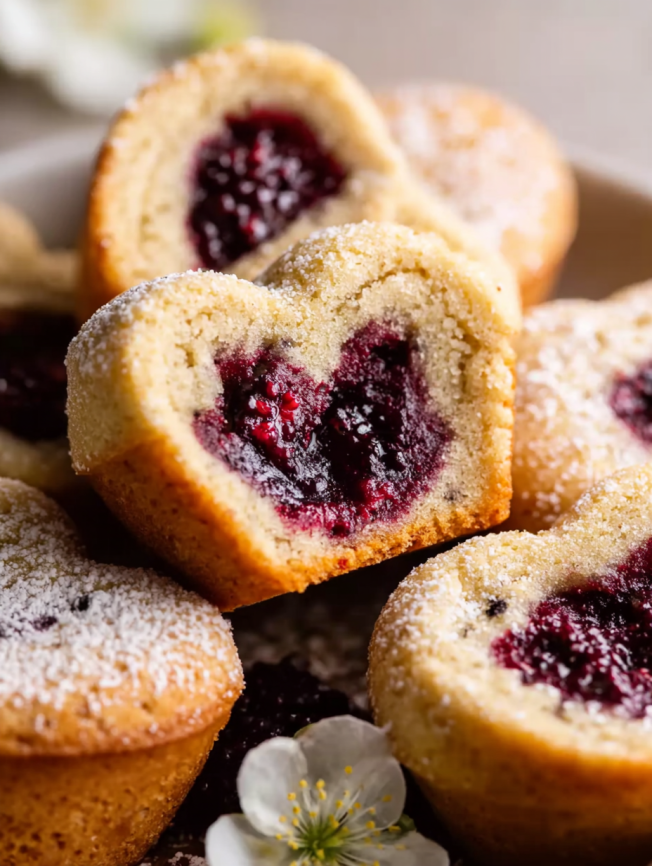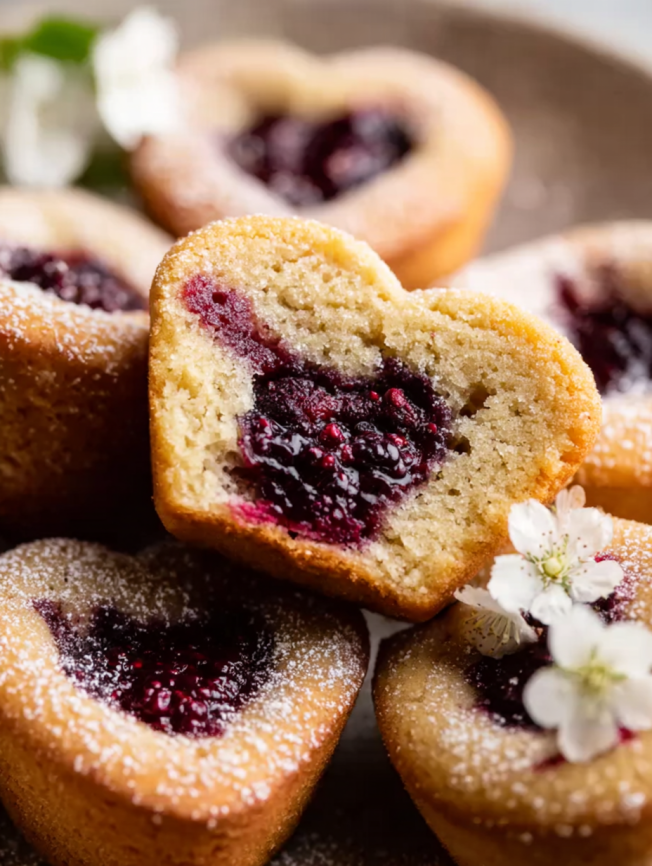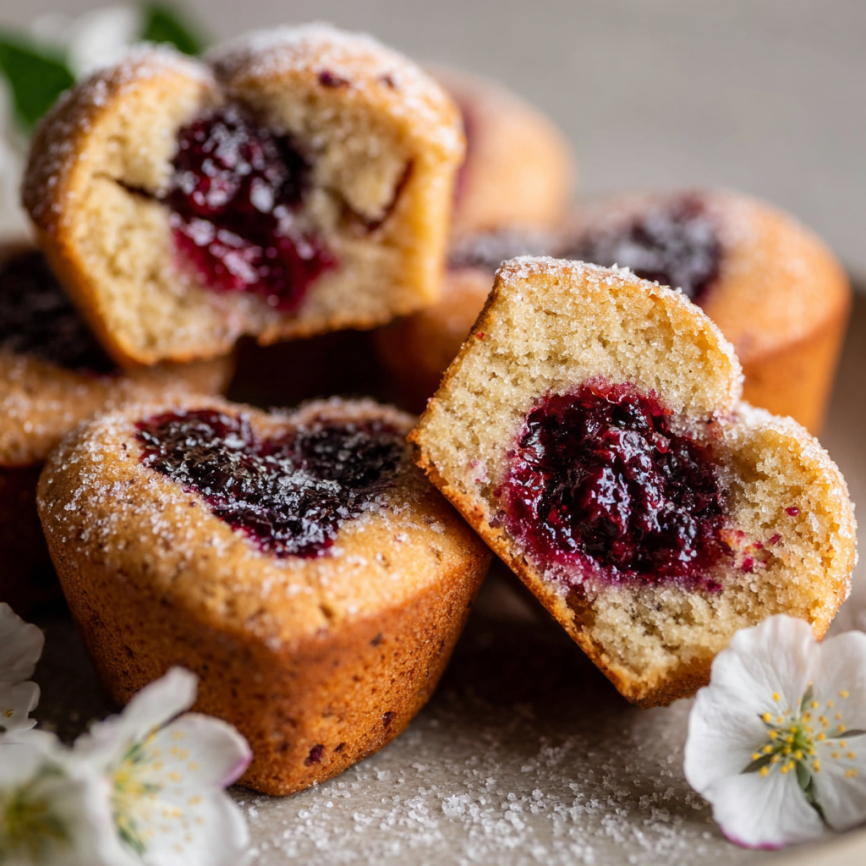There’s something magical about the aroma of brown butter wafting through the kitchen. When I first discovered these delicate tea cakes, I was immediately transported back to cozy afternoon gatherings with friends, where conversation flowed as smoothly as the tea being poured. These brown butter berry tea cakes have become my go-to recipe for special occasions and quiet Sunday mornings alike.
Unlike their more temperamental cousin, the madeleine, these miniature sponge cakes offer all the elegance with none of the fuss. The nutty richness of brown butter paired with fresh berries creates a sophisticated flavor profile that feels both comforting and refined.
Why You’ll Fall in Love with This Recipe
Perfect Balance of Flavors
The star of these tea cakes is undoubtedly the brown butter, which adds a deep, nutty complexity that elevates simple ingredients into something extraordinary. Meanwhile, the fresh berries provide bursts of tartness that perfectly complement the rich, buttery base.
Surprisingly Simple Technique
While these cakes look bakery-worthy, they’re refreshingly straightforward to make. Unlike traditional madeleines that require specific shell-shaped molds and precise timing, these tea cakes use a simple mini muffin pan and forgiving technique.
Versatile and Crowd-Pleasing
Whether you’re hosting an elegant tea party or packing a picnic lunch, these bite-sized treats adapt beautifully to any occasion. Furthermore, they’re naturally portion-controlled, making them perfect for those who want just a taste of something sweet.
Essential Ingredients
Main Components
- 10 tablespoons (142g) unsalted butter – The foundation of our brown butter magic
- 4 large egg whites (140g) – Provides lightness and structure
- 1 cup (105g) almond flour – Adds moisture and delicate nutty flavor
- 2/3 cup (85g) all-purpose flour – Creates the cake’s tender crumb
- 3/4 cup (150g) granulated sugar – Sweetens and helps create texture
- 1/2 teaspoon baking powder – Ensures proper rise
- 1/4 teaspoon salt – Enhances all the flavors
- 1 teaspoon lemon zest – Adds brightness and complexity
- 1 teaspoon pure vanilla extract – Deepens the overall flavor profile
Berry Selection
- 1 cup (130g) fresh berries – Choose from blackberries, raspberries, or blueberries
- Optional: 1/4 cup (30g) confectioners’ sugar – For dusting the finished cakes
Prep Time: 45 minutes
Cook Time: 15 minutes
Total Time: 1 hour
Yield: 30-36 mini cakes
Step-by-Step Instructions
Creating the Perfect Brown Butter
Begin by setting out a medium heat-proof bowl, as you’ll need it once the butter is properly browned. Next, slice your butter into tablespoon-sized pieces and place them in a light-colored skillet or saucepan. The light-colored interior is crucial for determining when the butter begins to brown.
Melt the butter over medium heat while stirring or whisking constantly. Once melted, the butter will begin to foam enthusiastically. Continue stirring without pause, keeping a watchful eye on the transformation happening in your pan.
After approximately 5-7 minutes, you’ll notice the butter beginning to brown as lightly browned specks form at the bottom of the pan. Additionally, a distinctive nutty aroma will fill your kitchen. The color will gradually deepen from yellow to golden to golden-brown.
When the butter reaches a light caramel-brown color, remove it from heat immediately and pour it into your prepared bowl, including any brown solids that have formed. Separate out 2 tablespoons of this brown butter for greasing your muffin pans in the next step.
Cool the remaining brown butter (about 1/2 cup) for 30 minutes in the refrigerator, or until it reaches room temperature and is no longer warm. However, don’t cool it longer than necessary, as the butter will begin to solidify.
Preparing Your Baking Setup
While your brown butter cools, preheat your oven to 350°F (177°C). Using a pastry brush, carefully coat the cups of a 24-count mini muffin pan with the 2 tablespoons of reserved brown butter. Since this recipe yields 30-36 tea cakes, you’ll need to grease a second pan or plan to bake the batter in batches.
Mixing the Tea Cake Batter
Using either a hand mixer or a stand mixer fitted with a whisk attachment, whip the egg whites on high speed in a large bowl until soft peaks form. This process typically takes about 2-3 minutes of consistent mixing.
Add the almond flour, all-purpose flour, granulated sugar, baking powder, salt, and lemon zest to the whipped egg whites. Beat on low speed until just combined, and don’t worry that the egg whites deflate during this process—you’ll still taste their fluffy contribution in the finished cakes! The mixture will appear sticky, lumpy, and thick at this stage.
Pour in the vanilla extract and your cooled brown butter, then beat on low speed until everything is well combined. The batter should be cohesive but still maintain some texture from the almond flour.
Assembly and Baking
Spoon exactly 2 teaspoons of batter into each greased muffin cup, ensuring even distribution. Gently press one berry into the center of each portion of batter. There’s no need to completely submerge the berry—simply nestle it on top where it will sink slightly during baking.
Bake for 14-16 minutes, watching for the edges to turn a beautiful golden brown. Remove from the oven and allow the tea cakes to cool in the pan for 10 minutes before attempting to remove them. Don’t be concerned if the tea cakes slightly deflate as they cool—this is completely normal.
Final Touches
If desired, lightly sift confectioners’ sugar over the warm or cooled tea cakes just before serving. This adds an elegant finishing touch that complements both the visual appeal and subtle sweetness of the cakes.

Creative Serving Suggestions
Elegant Tea Party Presentation
Arrange these delicate cakes on a tiered serving stand alongside your finest china and a selection of premium teas. Earl Grey and chamomile pair particularly well with the nutty brown butter flavor.
Casual Weekend Brunch
Serve them warm with a dollop of freshly whipped cream or a small scoop of vanilla ice cream. The contrast between the warm cake and cool cream creates a delightful temperature play.
Sophisticated Dessert Course
Present them as a refined dessert by plating 2-3 cakes with a drizzle of berry coulis and a sprig of fresh mint. This presentation elevates them to restaurant-quality status.
Delicious Recipe Variations
Seasonal Berry Swaps
During summer months, experiment with fresh strawberry halves or even small chunks of stone fruits like peaches or apricots. In winter, try dried cranberries or chopped dried figs for a different texture and concentrated flavor.
Citrus Variations
Replace the lemon zest with orange zest for a warmer, more aromatic profile. Alternatively, add a small amount of lime zest for a more tropical twist that pairs beautifully with blueberries.
Spice Enhancements
Consider adding a pinch of cardamom or cinnamon to the dry ingredients for a warming spice note that complements the brown butter perfectly. These additions work particularly well during fall and winter months.
Nut Flour Alternatives
While almond flour is preferred, you can experiment with hazelnut flour for an even more pronounced nutty flavor, though the texture will be slightly different.
Make-Ahead Tips
Advance Preparation Strategies
The brown butter can be prepared up to 2 days in advance and stored covered in the refrigerator. Simply bring it to room temperature before using, or warm it slightly if it has solidified too much.
You can also mix the dry ingredients together and store them in an airtight container for up to one week before baking day. This streamlines the process when you’re ready to bake.
Freezing Instructions
Baked and completely cooled tea cakes freeze exceptionally well for up to 3 months. Wrap them individually in plastic wrap, then place in a freezer-safe container. Thaw overnight on the counter before dusting with confectioners’ sugar and serving.
Storage Guidelines
These tea cakes are undoubtedly best enjoyed the day they are made, when their texture is at its most tender. However, leftover cakes can be stored covered lightly at room temperature for up to 3 days or refrigerated for up to one week.
Important Notes
Equipment Considerations
When browning butter, a light-colored skillet is essential for monitoring the color change accurately. If you only have dark cookware, set a timer and check the color by spooning some butter into a glass bowl every minute after the 5-minute mark.
Almond Flour Insights
Almond flour consists of finely ground blanched almonds and is readily available in most grocery stores. While you could use almond meal (which is coarser), avoid making your own unless you’re experienced, as almonds can quickly turn into almond butter if over-processed.
Pan Size Adaptations
If using a regular 12-count muffin pan, this recipe makes 10 tea cakes. Use a scant 2 tablespoons of batter per cake and top with 2 berries. Extend the baking time to 18-21 minutes.
Berry Substitutions
Fresh berries work best, but you can use frozen berries if thawed first. You’ll need 30-36 individual berries total. If using small blueberries, use 2 per tea cake for adequate fruit presence.

Frequently Asked Questions
Can I make these without almond flour?
Unfortunately, almond flour is crucial to achieving the proper texture in these tea cakes. Substituting regular flour significantly changes the final result. Instead, consider trying a different tea cake recipe specifically designed without almond flour.
Why did my brown butter burn?
Brown butter can go from perfectly nutty to burnt in seconds. Always use medium heat and stir constantly. The butter is ready when it’s light caramel-brown with a nutty aroma—don’t wait for it to get darker.
Can I double this recipe?
Absolutely! This recipe doubles well, though you’ll need to brown the butter in batches unless you have a very large skillet. Keep the same timing and temperature guidelines for best results.
Why are my tea cakes dense instead of light?
This usually happens when the brown butter is still too warm when added to the batter, which can deflate the egg whites. Ensure your brown butter has cooled to room temperature before incorporating it.
How do I know when they’re perfectly baked?
Look for golden brown edges and a center that springs back lightly when touched. Overbaking will result in dry tea cakes, while underbaking leaves them too soft to remove from the pan easily.
Can I use a different type of sugar?
Granulated sugar works best for the texture and structure of these cakes. Brown sugar would add moisture but might make them too dense, while powdered sugar could affect the texture negatively.

